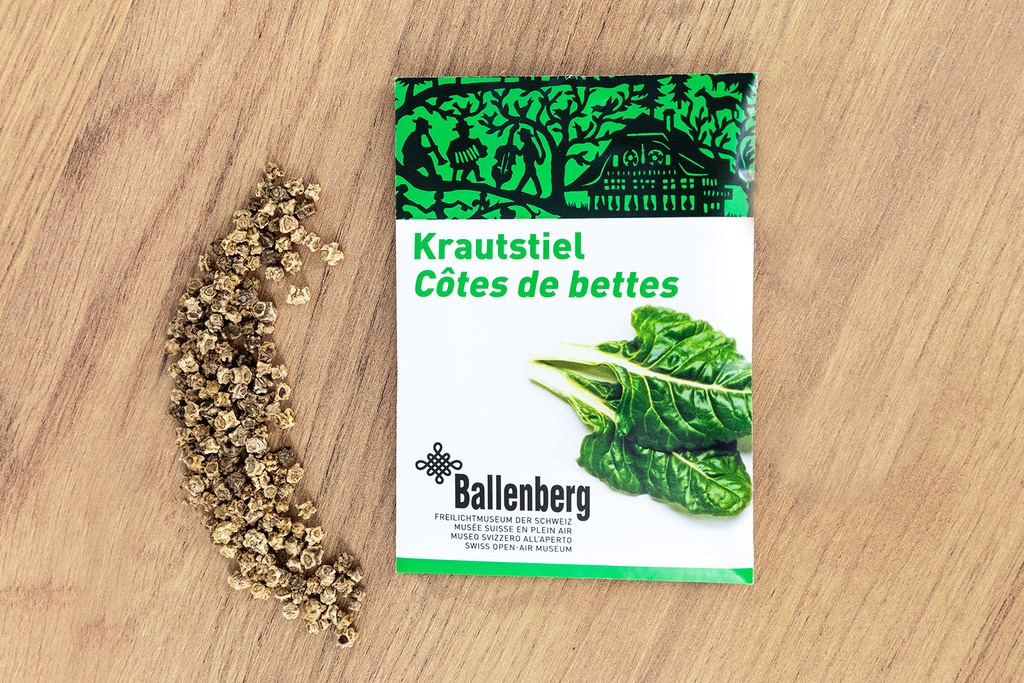Swiss chard, Geneva (Ballenberg Edition)
This hardy species overwinters very nicely in the open field—hence its common name of field chard. It can be used until late in the spring. The wide, white petioles (leaf stems) result in extensive leaves that add to your yield. The broad leaf can be cooked as spinach or used in rolled leaf recipes. It is a very tasty and high-yielding leafy vegetable.
Discover our special edition seed packets in collaboration with Ballenberg, the Swiss open-air museum!
Swiss chard is a biennial plant with moderate sunlight requirements. However, its water and fertilization needs are high. It prefers soils rich in organic matter and is frost-resistant.
Swiss chard can be sown directly into open ground or seed pots.
For direct sowing, sow the seeds from April to May at a depth of 2 cm. Space the rows 50 cm apart. As the plants grow, thin them to 50 cm on the row.
For pot sowing, sow the seeds from May to July. The seeds will germinate optimally at temperatures between 10°C and 20°C. Plant the young plants in open ground 4 weeks later. For harvesting, regularly pick the outer leaves.
| 1 | 2 | 3 | 4 | 5 | 6 | 7 | 8 | 9 | 10 | 11 | 12 | |||||||||||||||||||||||||||||||||||||||||||||||||||||||||||||||||||||||||||||||||||||||
|---|---|---|---|---|---|---|---|---|---|---|---|---|---|---|---|---|---|---|---|---|---|---|---|---|---|---|---|---|---|---|---|---|---|---|---|---|---|---|---|---|---|---|---|---|---|---|---|---|---|---|---|---|---|---|---|---|---|---|---|---|---|---|---|---|---|---|---|---|---|---|---|---|---|---|---|---|---|---|---|---|---|---|---|---|---|---|---|---|---|---|---|---|---|---|---|---|---|---|
| Sowing in pots | ||||||||||||||||||||||||||||||||||||||||||||||||||||||||||||||||||||||||||||||||||||||||||||||||||
| Plant | ||||||||||||||||||||||||||||||||||||||||||||||||||||||||||||||||||||||||||||||||||||||||||||||||||
| Harvest | ||||||||||||||||||||||||||||||||||||||||||||||||||||||||||||||||||||||||||||||||||||||||||||||||||
| Sowing quantity 3 g/Are | ||||||||||||||||||||||||||||||||||||||||||||||||||||||||||||||||||||||||||||||||||||||||||||||||||





